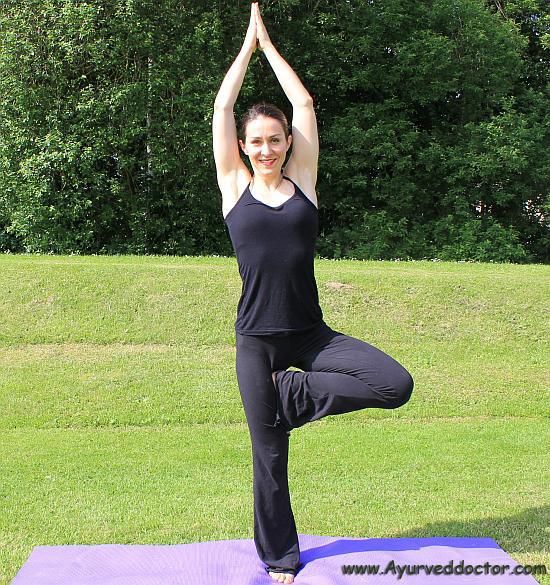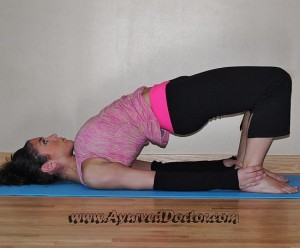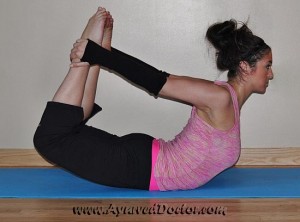Sasankasana is also known as rabbit posture or hare posture, since Sasanka means rabbit or hare in Sanskrit. The final posture of this asana resembles a leaping rabbit or hare. However, a few other schools term this as moon posture or crescent moon posture, since Sasanka also means moon in Sanskrit.
Procedure for Sasankasana
- You should sit in Vajrasana.
- You should keep your knees together on the floor.
- The weight of your body should be resting on your heels.
- The soles of your feet should be turned away from your body.
- You should inhale slowly, while raising both your hands straight above the head.
- The palms of the hands should be turned outward and the inside of your hands should be touching your ears.
- You should now lean backwards as much as possible.
- You should exhale, while bending and lowering the trunk and pelvis forward. When you are doing this, the hands should remain straight touching your ears and your seating position should be firm.
- You should bend forward and bring your hands and head fully forward until your hands are touching the floor and then your forehead rests on the floor.
- You should move your palms along the ground, so that your hands get maximum stretch.
- You should keep the palms together and straight, while your abdomen presses on your thighs. You can also interlock the palms and deepen the stretch of your hands.
- You should hold your breath and remain in this asana as long as you are quite comfortable.
- You should inhale slowly and return to the original position of Vajrasana, with the hands touching your ears and maintaining the seated position before repeating the asana for 2-3 more times.
- When you have completed this asana, you can bring down your hands and remain in Vajrasana for a few minutes.
Benefits of Sasankasana
Sasankasana provides a toned abdomen. It improves digestion and removes constipation. The spinal muscles get toned up. Sasankasana relieves neck pain. The upper back, hands and shoulders get fully stretched in this asana. It strengthens your knees and ankles. It refreshes the brain. Sasankasana can relieve many spinal problems. This asana is a very good treatment for persons with dropping the shoulders and correcting their posture. It is possible to cure slipped disc, if you practice this asana under the guidance of an expert yoga master.
Variation of Sasankasana
From your stretched position with the forehead and palms pressing the floor, you could lift your back and knees, so that your knees are in an upright position and your back is raised from the floor and inclines slightly forward, while your forehead is touching the floor. In this position, you should raise your hands until they are interlocked about your upper back. You can hold this position for 15 to 30 seconds and return to standard Sasankasana. You can also do this from a position where you are standing on your knees.
This variation of Sasankasana helps in reducing mental fatigue and refreshing the brain, since more blood gets pumped to your face and brain. Your back, spine and nervous systems obtain greater flexibility. This variation helps in curing sinus problems, chronic tonsillitis and colds. It also improves your digestion.












